2005/11/01
214. zenbakia

eu es fr en cat gl
Aparecerá un contenido traducido automáticamente. ¿Deseas continuar?
Un contenu traduit automatiquement apparaîtra. Voulez-vous continuer?
An automatically translated content item will be displayed. Do you want to continue?
Apareixerà un contingut traduït automàticament. Vols continuar?
Aparecerá un contido traducido automaticamente. ¿Desexas continuar?
The advantage is that the city is there
Text created by automatic translator Elia and has not been subsequently revised by translators.
Elia Elhuyar
Biarritz, Siena, New York and Le Mont-Saint-Michel. Cities are or have been four, but they do not resemble each other. They have been created in different situations and environments, and although in the four there were people, they probably emerged with different objectives. And there is no single concept of city, it is easy to distinguish whether a home is a city or not, but it is difficult to give a valid definition for all cities.
The advantage is that the city is there
01/11/2005 | Roa Zubia, Guillermo | Elhuyar Zientzia Komunikazioa
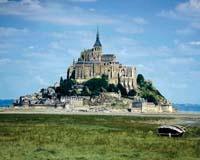
(Photo: Archive)
A Celtic tribe named Parisii established its residence on a small island of the Seine River a. C. III. More or less in the twentieth century. Living on this island had many advantages: it was an exceptional refuge, was in a prosperous area and, through bridges, was an ideal place to control the market and passengers. That is why that island is the origin of a city. The island is called La Cité and of course the city is Paris.
And Paris is just one example. Since he became sedentary, the human being has sought suitable places to live, which report advantages. In these places the population has grown and cities have been formed. The protection of an island, bay or hill, its location by a river, the prosperity of a delta, the possibility of cultivating a fertile land or any other advantage: people have concentrated in places with advantages, although some are dangerous.
Mexico City, for example, was built on a plain between volcanoes. They lived in a volcanic (and therefore fertile) plain full of lakes as opposed to the threat of volcanoes. Another example today is New Orleans. Thanks to the Mississippi River Delta, the entire environment was assured of fertility. But deltas are dangerous places. During the construction of the city, its floor was not compact; over time, the weight of the city has stepped on the ground and much of it has remained below sea level. The risk of flooding is therefore high.
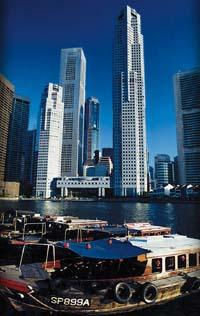
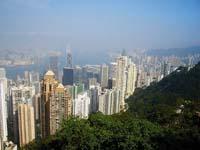
The vertical city model is very clear in these two examples. Thanks to this model, in Singapore (above) and Hong Kong (below) many people live in a very small area.
(Photo: M. Ozas; Walldaperwordl)
The case of New Orleans is now evident, but time changes any city. And the city changes its surroundings. Of course, Mexico City has long exhausted the resources of the volcanic plains, Paris has long overtaken the island of La Cité and had to protect and otherwise supply its inhabitants, and in New Orleans, the water pipeline destroyed the original wealth of the delta and caused a great risk of flooding.
Could these environmental risks and problems not be predicted? Of course, they can be predicted, but it is very difficult to take effective measures. In short, the evolution of cities is due to population changes. Whatever the reason, the general trend of cities is to grow. The more people live in the city, the more difficult it is to take care of the environment and correct wrong decisions. For example, changing the life and place of residence of twenty million people in Mexico is very difficult. And the environmental impact of the city.
Vertical or horizontal
In any case, the growth of cities can be redirected. Above all you can plan the size of the buildings -the concentration of the population-.
Some cities have grown upwards, others wide. Height growth has the advantage that many people can live in places with little built surface. However, this type of growth poses great constructive difficulties and security problems. The second option, growing wide, is safer, but requires a large area and a very efficient transport network so that the city's resources reach everywhere.

Detroit. Example of concept of American city. In the area called Downtown there are very high buildings, it is a financial and administrative space. The dwellings of the population, however, are small single-family constructions scattered around the environment.
BAY13
Both models are in the Basque Country itself. This contrast manifests itself in the peoples of the South and the North. The houses of the South are higher and many people are concentrated in small places, while in the North the population lives much more dispersed. However, neither are extreme examples of both models.
Los Angeles, Detroit or Minneapolis are examples of horizontal city. And the concept of American city is that of offices and administration, in the city center, in the giant buildings, in the downtown, while the inhabitants live in small houses, in a very wide territory. Hong Kong and Singapore are the most spectacular examples of vertical cities. These two cities, located on the islands, build large buildings (sometimes floating on the water) without space to build.
What if we included a whole city in one building? Projects of this type have also been launched, but they have remained in a project. Fortunately, perhaps.
Where were the Basque capitals built?
According to experts, Maule is the oldest Basque capital. It was built on the site of a prehistoric fortress, sheltered from a hill. On this fortress a castle collapsed, around which the city grew.
Pamplona is also not yesterday morning. There are pre-Roman remains. Later, a. C. Pompey's troops made the city of Ponpaelo to spend the winter of 75-74 years. The city was built around a hill.
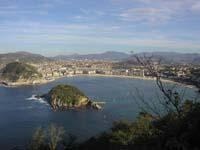
(Photo: R. Imaz)
The first references of two other capitals also date from the first century BC. Bilbao was a port of autrigones, also used by the Romans. Bayonne was then a Roman camp. It was an ideal place, as it was next to the sea, where two rivers, those of Aturri and Errobi, converged.
The first three references date back to the Middle Ages. Donibane Garazi was the capital of the territory of Amikuze. It was built at the confluence of the Arnegi and Behobia rivers. The first mention of San Sebastian is that of a monastery in the Old Town. The fishing port was built across the bay of La Concha and the city grew sheltered from it. Finally, Vitoria-Gasteiz dates back to 1025. Sheltered from a hill, ideal place to build the city.
Capitals born out of nothing
Washington
When the United States gained independence, a Congress was held. Congress had to be held in the capital of the new country, but it was not easy to decide what the capital was. During the War of Independence, the capital toured cities and Congress was in New York and Philadelphia, among other places.
The capital became a source of debate: why should capital be in this state and not that? In what state should I be?
Soon they decided it was best to create a neutral zone, create a city from scratch. The states of Virginia and Maryland gave land for it and at the mouth of the Potomac River built a city in 1793. This is how Washington emerged, which has since been and is capital, and there has been (and is) Congress.
Brasilia
Brazil is a state federation that had the same problem as the United States in the 19th century. At the beginning of the century: it needed an independent capital of all the states of the federation.
In 1823, the politician José Bonifacio proposed to put the name 'Brasilia' to the capital of the future. But Bonifacio did not decide where to locate the new city. They say that in 1883 a dream of the Italian saint Dom Bosco decided the matter: a voice told Dom Bosco that the land under a depression is very productive around the fifteenth parallel.
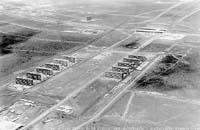

The environment of the Brazilian ministries during its construction (above) and today (below).
(Photo: Public Archive DF; A. Areal)
The legend Dreams and legends built Brasilia in that place. The works began in 1957 and were inaugurated in 1960. At present, Brasilia has two million inhabitants.
Camber
The people of the tribes of the Australian people of Ngunnawal went to a very special place when they wanted to meet. The place was located to the southeast, 240 kilometers from the current location of Sydney. It was a good meeting point, since in the area there were large colonies of an edible sits. It was the place chosen by the Australians to build their capital. Camberra means meeting point.
Islamabad
In 1958 it was decided to build a capital in Pakistan. After eleven years of independence, the capital was Karachi, the largest city in the state and the only one with port. But Karachi was far from other important areas and had a very demanding climate.
The area chosen to build the Islamabad is located near the city of Rapalwindi. In the Rawalpindi was, among others, the headquarters of the army, and it is also an environment of temperate climate.
A Greek company planned the city. It is a triangular city, with the streets like grids. They believed that the city would expand until Rawalpindi himself entered.
The European city

(Photo: Archive)
The concept of European city has two clear pillars. On the one hand, the model of Roman cities, extended in times of peace. Some of these large cities (Rome itself had a million inhabitants) were equipped with Roman technology. On the other hand, the medieval city is basic in Europe. Many are built around some fort or refuge. These cities were called burg in Central Europe. This word has come in many languages (Swedish, Goteborg; English Scarborough; German, Freiburg; Spanish, Burgo de Osma...).
Roa Bridge, Guillermo
Services
214
2005
Results
032
Environment
Dossier
Other













